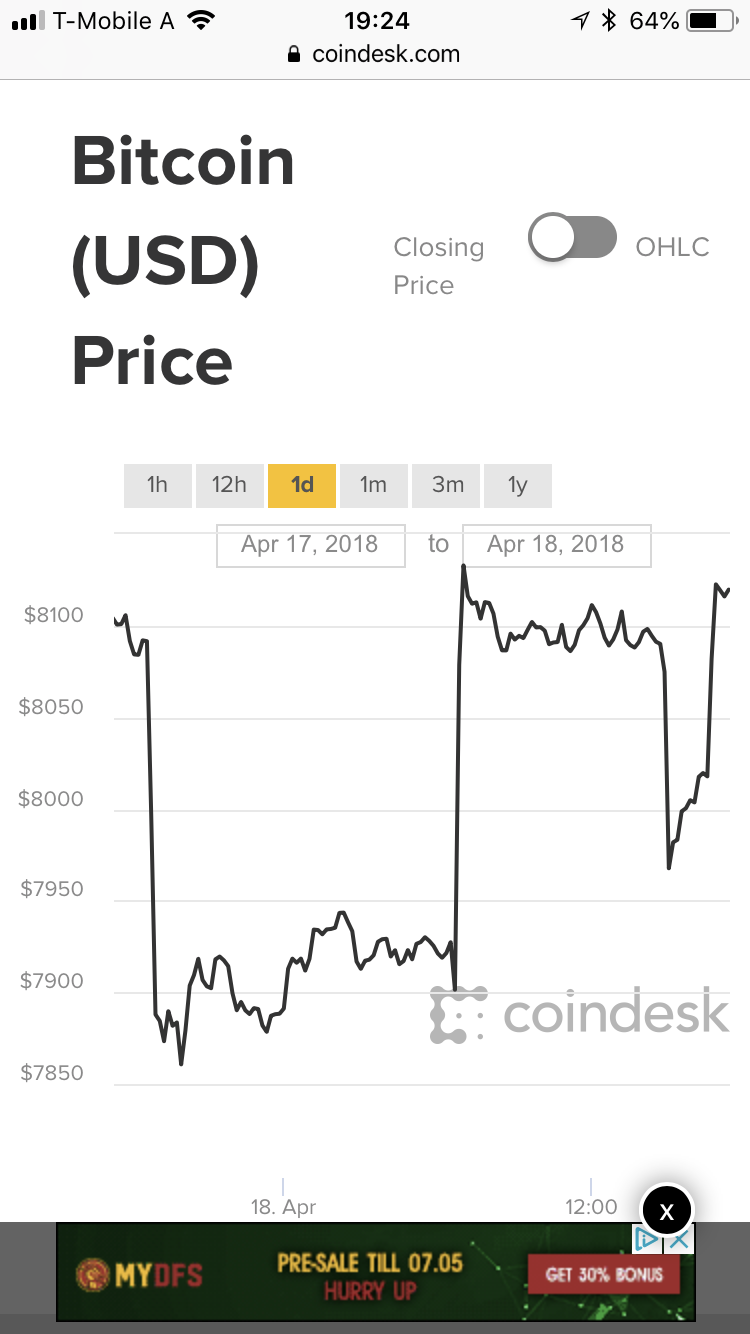Bitcoin and chartism make an unholy alliance. The vomiting camel, beards and Bart Simpson can help us to see something fishy going on.
The pattern is unmistakeable.
How chartism works
A graph shows a financial trend-line (the price of gold) going up and down a couple of times, then declining more steeply.
Around the trend-line, someone has sketched a crude profile of a camel, its head lowered as if to vomit.
The vomiting camel
Welcome to the wonderful world of the Vomiting Camel, a spoof species of technical analysis created by FT writer @katie_martin_fx to poke fun at how so-called technical analysts attempt to predict future price movements of eg stocks or oil or gold by drawing lines on graphs to identify trends.
You can read her brilliant article in the FT here (you may have to get a free temporary FT subscription if you don’t subscribe already).
One of Katie’s own vomiting camels (by permission)
Katie’s piece reminded me of two things.
Bitcoin and chartism 1
I have read with bemusement the polarised arguments on the Internet about whether the so-called crypto-currency Bitcoin. Some experts argue it isthe future of money and the best ever place to put your savings. Others say it is a dangerous global pyramid selling scheme. Their advice: do not touch, even with two bargepoles strapped end-to-end.
Having worked in Russia in the ’90s, I am alarmed by pyramid schemes. These work by giving early investors huge rewards paid for by new investors. The early investors become passionate advocates of the scheme – having made great returns. The scheme expands rapidly until it runs out of new investors and collapses.
Bitcoin feels a bit like that to me, but with the potential to suck in investors not from a single country, but from the whole world. It could therefore run and run before it collapses with potentially wide-reaching effects.
I nonetheless find the price movements of Bitcoin intriguing. If we could be sure it was a pyramid scheme, Bitcoin wouldn’t exist. So I look at trends from time to time.
Bitcoin and chartism: the Bart/Beard effect
The result of my study has been to move me towards the “don’t touch with two bargepoles” camp. The reason is what we might, in tribute to Katie Martin, christen the “Bart/Beard effect”. Look at this:
You often see with Bitcoin a pattern of a massive rise in Bitcoin prices, a period of small fluctuations, then hours later a massive fall (a “Bart”). You may also see a massive fall followed by a rise (a “Beard”). Both are visible in the left hand chart. Although obviously not a cartoonist, I have tried to clarify what I’m talking about on the right-hand version.
I could give you more examples but don’t want to stretch your patience. In fact, if you want to bale out altogether, go and check out my adulatory review of The Simpsons).
Bitcoin and chartism 2
Why does this matter? It matters because a volatile pattern of big rises, followed by falls, or vice-versa, could suggest two things. First, that markets are not liquid. Second, and worse, that they could be subject to manipulation.
Big, liquid markets like oil or gold are hard to manipulate. In theory, Bitcoin has a market capitalisation of $148bn at the time of writing on 21 April 2018, where I see Bitcoin prices are “doing a Bart”. That big value should, in theory, make the market hard to fix.
But that Bart/Beard effect is intriguing. Suppose you are rich in Bitcoins – what is known in the market as a Bitcoin whale. According to the Bloomberg article at at the link, around 1,000 people own 40% of Bitcoin. Perhaps you bought them long ago and have thousands. In fact, maybe you have so many that you are able to influence the price of bitcoins by buying or selling in the market. Result: you are able to make huge amounts of money, taken from the pockets of other, smaller market participants, at almost zero risk.
Chartism vs market fundamentals
Back in the ’80s I knew a brilliant, beautiful and successful “chartist”.
Most people believe that to invest successfully in, say, the stock market you should study the fundamentals of companies and their prospects. You might look at markets for a company’s products. You might look at their management, or the the wider economy. You might consider political and technological trends. Eventually you would mark them as “buy” or “sell”.
Say you were thinking of investing in a diesel-based motor company, or an oil company. In this case, you might look at alternative fuels; new technology; legislative proposals affecting diesel, climate change, and so on.
Chartists, by contrast argue that you might just as well predict price movements by looking at patterns (charts). By identifying predictable patterns, they argue, you stand just as good or better a chance of predicting future movements as analysts who look at fundamentals.
To take the diesel motor company or oil company, then, you should look at how the stock had behaved in the past, identify trends in movements, and then use those trends to identify future movements.
People use past performance to make decisions
Sounds crazy, right? Yet some people deploying those techniques make good money. People routinely follow historical trends to make current decisions. Thus: “whenever the price of X falls near $1,000, people will start buying again”; “sell in May and go away”; “always take your profit too soon”.
Googling Chartists, I find a sentence saying: “A chartist is also known as a technical analyst”. A 2012 article misleadingly entitled “The Myth of Chartism” actually concludes that “if technical analysis really is just a form of financial astrology, it is certainly behind the success of many investment stars”.
Moral: be sceptical
I’m not sure what to make of all this. I’m inclined to share Katie Martin’s scepticism about camel patterns – which, by the way, consistently arouses ire from those technical analysts whose efforts she lampoons. On the other hand, I can’t help being unsettled by the implications of my own Bart/Beard pattern – which surely puts me amongst the chartists myself.
Maybe all of human nature is about trying to identify patterns, and seeing how we can use whatever information we have to make the future a tiny bit more predictable. Discuss.
P.S. I hope you’ve enjoyed this piece on bitcoin and chartism. If you enjoy fresh, original writing, please subscribe to my newsletter (you can unsubscribe anytime you wish). I’ll send you a free “Hotel Story” to say thanks! Or I would be delighted if you would like to follow me on Facebook.











3 Responses
Da in meinen grauen Zellen, die die Finanzwirtschaft betreffen weisse Flecken vorherrschen, kann ich die lucide review über Bitcoins nicht beurteilen, halte mich aber an das sich übergebende Kamel, dem ich einen gesunden Instinkt gegen alles virtuelle zutraue. Und Kamele können eine kluge Wasser-Vorsorge-Wirtschaft betreiben….
Display dates of your articles!!!
Thanks. The date is in the address. But I could add it somewhere more explicitly. Can you remind me why this would be useful?